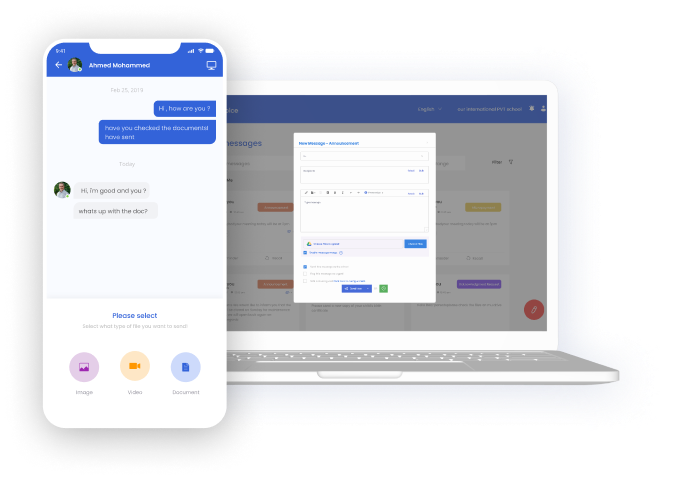Top features to look out for in a
School App
The market offers a wide range of school apps to help schools gauge and improve their communication
and increase parent engagement.
But it is essential to have an in-depth look at the best school app,
as each software is distinct in terms of how its interfaces are structured and the capabilities it
provides.
Here are a few key features you might want to consider before deciding to go for a school
app for your school communication needs.
Intuitive User Interface
A user interface (UI) is the space where you interact with the software. The goal of designing an
intuitive and clutter-free user interface is to make human interactions smooth and compelling so
the end goal can be easily achieved without any friction. In other words, the better intuitive and
responsive the UI is, the easier it will be to get things done.
So while choosing a school app,
you must spend time figuring out how the user interface works out for you. It is very significant
as you're about to invest your money and resources in implementing one in your school. So, when you're
looking into different software, pay attention to the entire app and functionalities.
When it comes to communication, platforms that have taken design cues from social media and are made
in mind to handle a community network are the best platforms to choose when deciding to
narrow down to a school communication app.
The school app should be easy to use and ensure maximum flexibility. It must have the option to
communicate with parents, teachers and students from anywhere easily. In addition
, it must have a modern and user-friendly design that is intuitive and engaging.
The school app must overcome the limitations of traditional platforms like emails and SMS.
It must be instant and packed with features that let users express themselves freely without barriers.
Ease of Communication
When it comes to engaging with parents, communication is not the only feature to look out for;
instead, it's the ease of communication that makes the difference. Most apps that come with
the intuitive communication feature provide ease of communication with their direct one-on-one
private chat feature, which removes the trouble of sharing personal phone numbers or email ids
to connect and initiate conversations. It should also enable parents and teachers to start conversations
with one another instantly.
Any interaction or engagement, be it private chats, school announcements,
or any other type of communication, must be delivered as in-app messages to the smart devices of parents and
students. This helps both the school and parents review messages in one place, aiding significant improvements
in engagement rates and overall communication between parents and teachers.
But different school communication software will account for various use cases even though they all serve a common purpose.
So, it's a good idea to check if the school app you're interested in provides ease of communication no
matter who you choose to communicate with.
Manage communication
The ability to overview and manage engagement and communication is another feature shared by the major school communication software.
This enables schools to tap into insightful data about who is communicating with who in your entire school.
Ability to analyze engagement reports
The ability to collect insightful data helps the schools to measure parent engagement.
It can be used to gain a comprehensive picture of parents' overall feelings on the school's classroom conditions, supervisory impact, and motivation that regular channels of communication may not provide.
Parent interaction also helps to collect feedback regularly rather than annual or quarterly to make data-driven decisions.
Enough Collaborative Space
When parents feel their suggestions are valued and feel they are indeed a part of the school ecosystem,
they interact with teachers more and create the best possible outcomes for children. The children,
in turn, perform well in-class activities and improve their morale and performance.

















.png)











